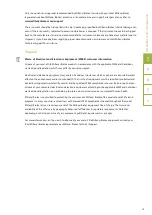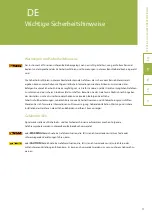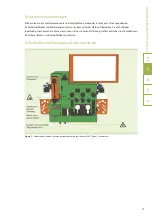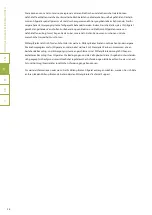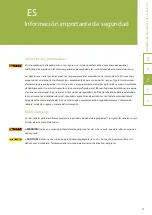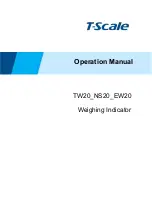
Chemical and biological hazards
Depending on the biological material used, contamination infection may lead to severe personal injury or
death. All clinical samples must be considered potentially infectious.
If biohazardous material is or has been used, the operator must choose and wear personal
safety equipment as indicated in the warnings and precautions for the particular substance.
The above safety precaution also accounts for any hazardous chemical, including toxic or
corrosive chemicals, acidic or radioactive substances that may be present in the sample.
Wear protective gloves and clothing, as well as safety glasses to prevent contact of the substance with skin and
eyes. Defective or inadequate safety equipment is hazardous. If hazardous material has been used or spilled,
care must be taken to thoroughly decontaminate the instrument. It is strictly prohibited to continue to handle
contaminated accessories or parts of the instrument.
Also protect mouth and nose as aerosols might leak from the system. The instrument must be operated in a
safety hood if hazardous or unknown material is being processed.
All liquid and solid waste must be considered hazardous and, must be therefore handled taking universal
laboratory precautions. Waste disposal must be in accordance with any local regulations.
Before disposal, decontaminate all tubes and other consumables that were in contact with
biohazardous material.
Liquid waste must be autoclaved or decontaminated using a disinfectant that is
appropriate for the specific pathogen, e.g., 10% bleach, isopropyl alcohol, or 70% ethanol.
Failure of parts containing biohazardous material or liquids that have been in contact with such materials could
cause a hazard.
Always inspect the fluidics system (complete tubing set, reservoirs, bottles and their closures,
valves, columns, diluters, peristaltic pumps, and uptake needle) before switching on the
instrument.
If leakage has been detected, replace all damaged parts before switching on the instrument. If
damaged part cannot be replaced, unplug and do not use the instrument.
Servicing and transportation
Improper or incorrect servicing or repair of the instrument can cause hazards to users, lead to unpredictable
results, cause instrument malfunctions or damage, as well as premature wear and tear and reduced life of the
instrument. It may also void your warranty.
Unless otherwise specifically noted in this user manual or other Miltenyi Biotec documentation,
do not service the instrument yourself.
Servicing and repair must be performed by qualified service
personnel.
When replacement or spare parts are required, ensure that the service provider uses only genuine Miltenyi
Biotec parts, or third-party parts specified and recommended by Miltenyi Biotec. Using unauthorized parts can
cause malfunctions of the instrument and impair results. Miltenyi Biotec does not honor any warranty or accept
any responsibility for instrument failure or damages resulting from the use of inappropriate parts. After
completing any service or repair work, ensure that your authorized Miltenyi Biotec service provider performs all
safety checks as required by the repair procedure to ensure that the instrument is operating correctly.
IM
P
O
R
T
A
N
T
S
A
FE
T
Y
IN
FO
R
M
A
T
IO
N
E
N
D
E
E
S
F
R
IT
14
Summary of Contents for MACSQuant 10
Page 1: ...MACSQuant Instrument User manual ...
Page 8: ...6 ...
Page 18: ...IMPORTANT SAFETY INFORMATION EN DE ES FR IT 16 ...
Page 61: ...1 INTRODUCTION 59 Figure 1 2 BFront view of the MACSQuant Instrument doornot shown ...
Page 62: ...Figure 1 3 BRearview of the MACSQuant Instrument 1 INTRODUCTION 60 ...
Page 76: ...2 INSTALLATION 74 ...
Page 86: ...4 CALIBRATION 84 ...
Page 90: ...5 HARDWARE MONITOR 88 ...
Page 92: ...6 LIVE SUPPORT 90 ...
Page 106: ...10 TECHNICAL SUPPORT 104 ...
















